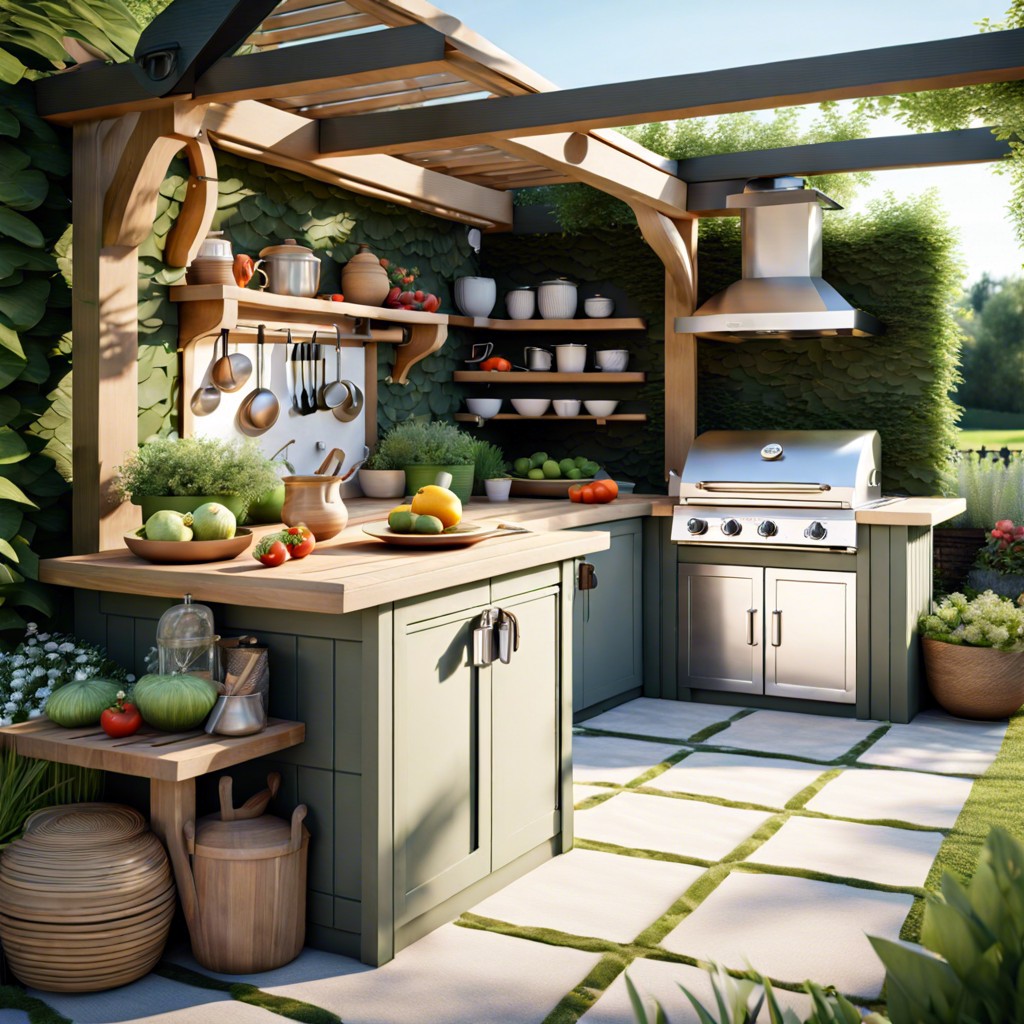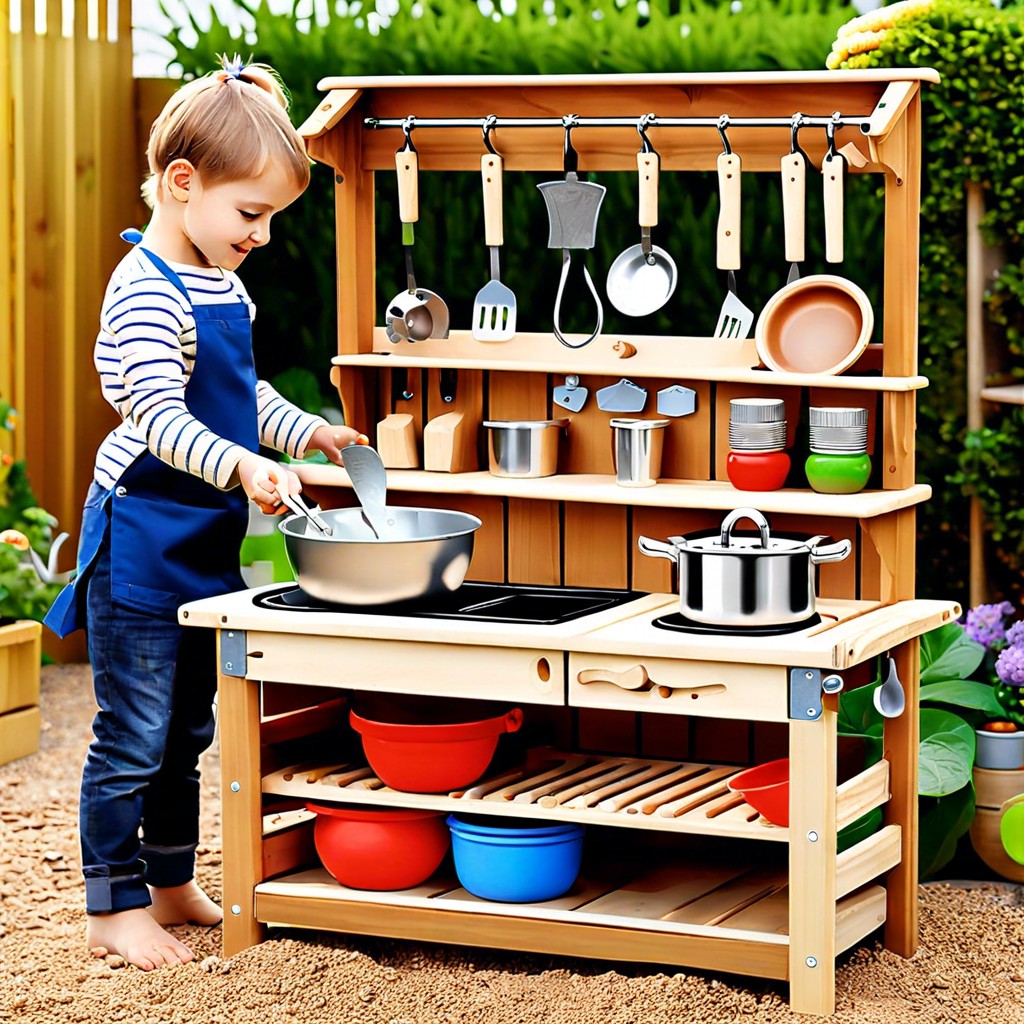Last updated on
Discover the essential steps to create your dream outdoor kitchen on a deck, transforming your backyard into an incredible entertainment space for family and friends.
Outdoor kitchens are becoming increasingly popular among homeowners who love to entertain guests and enjoy cooking outdoors. And what better place to build an outdoor kitchen than on your deck? Not only does it save space in your backyard, but it also allows you to cook and dine al fresco while enjoying the beautiful view from your elevated deck.
In this article, we’ll provide you with a step-by-step guide on how to build an outdoor kitchen on a deck, including the necessary materials, tools, and tips for a successful project. So let’s get started!
What's Inside
Can You Build an Outdoor Kitchen On a Deck?
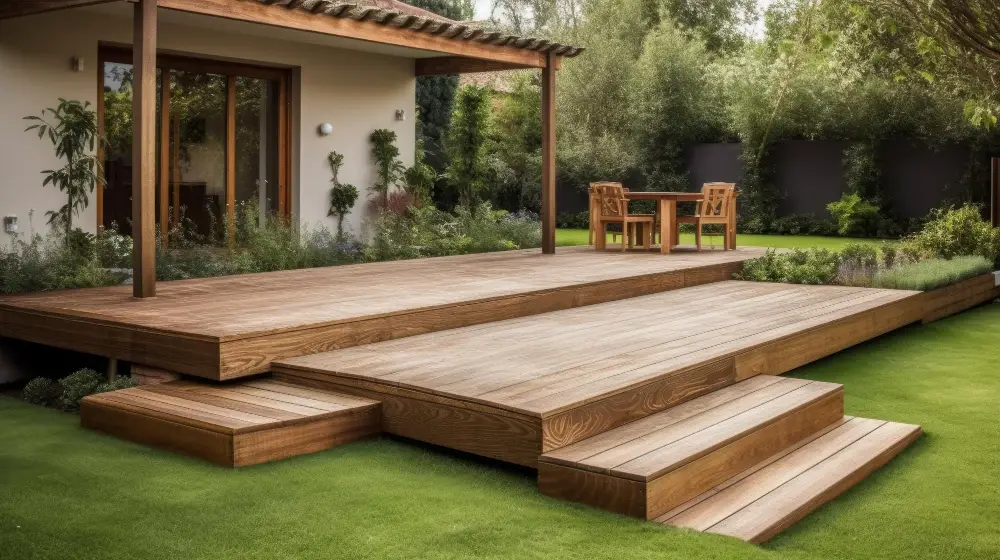
When it comes to building an outdoor kitchen on a deck, the first question that comes to mind is whether it’s possible or not. The answer is yes, you can build an outdoor kitchen on a deck if you follow some essential guidelines and take necessary precautions.
However, before starting your project, there are several factors that you need to consider.
Firstly, assess the condition of your existing deck and determine its weight capacity. A standard wood frame deck may not be strong enough to support the additional weight of appliances and cabinets required for an outdoor kitchen.
Therefore, it’s crucial to ensure that your current structure can handle this extra load.
Secondly, check with local authorities about any regulations or permits required for building structures like decks in your area. Some cities have specific codes regarding construction materials used in decks as well as their height from ground level.
Lastly but most importantly – safety should always come first when designing any type of home improvement project involving gas lines or electrical wiring outdoors! Make sure all connections are secure before using them so accidents don’t happen down the line!
Choosing the Right Location
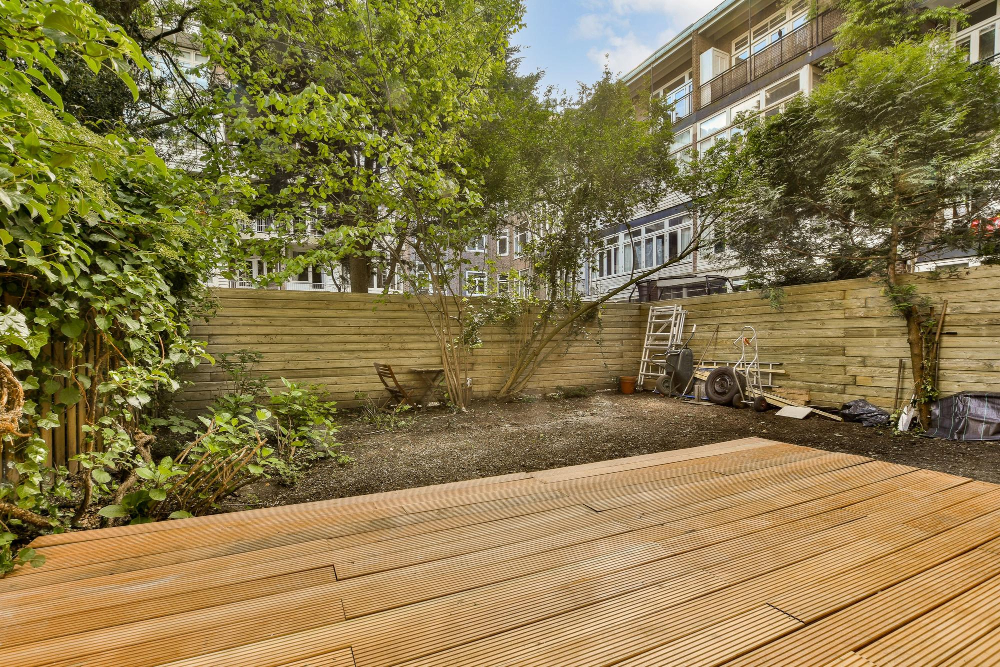
You want to make sure that your outdoor kitchen is easily accessible and conveniently located for cooking and entertaining purposes. Consider factors such as wind direction, sun exposure, privacy, and proximity to indoor kitchens or dining areas.
Ideally, you should choose a spot that receives plenty of natural light but also has some shade during the hottest parts of the day. This will help keep you cool while cooking and prevent food from spoiling in direct sunlight.
Consider how close your outdoor kitchen will be to other areas of your deck or backyard where people may gather. You don’t want it too far away from seating areas or too close to high-traffic zones where people might bump into each other while carrying hot dishes.
Planning and Design Factors

First, think about the size of your deck and how much space you want to allocate for the kitchen area. You’ll also need to decide on the layout of your outdoor kitchen based on how you plan to use it.
Consider what appliances you want in your outdoor kitchen as well as their placement. For example, if you love grilling, make sure that’s at the center of everything else so that smoke doesn’t interfere with other cooking activities or guests’ comfort.
Another important factor is weather protection – will rain or snow damage any part of this setup? If so then waterproofing measures should be taken into account during design phase too!
Don’t forget about lighting! Proper illumination can help create an inviting atmosphere while ensuring safety when cooking after dark.
Deck Strength and Support

The last thing you want is for your deck to collapse under the weight of heavy appliances and countertops. Therefore, it’s crucial to assess your deck’s strength and support before proceeding with any construction.
The first step is to determine if your existing deck can handle additional loads or if reinforcement is necessary. You may need professional help from an engineer or contractor who will evaluate whether adding an outdoor kitchen will require structural modifications.
It would be best if you also considered how much weight each appliance adds when selecting them for use in an outdoor kitchen on a deck. For example, built-in grills typically weigh between 100-200 pounds while refrigerators range from 150-300 pounds depending on their size.
Assessing Your Deck’s Weight Capacity

A deck that is not strong enough to support the additional weight of an outdoor kitchen can be dangerous and lead to costly damages. To determine if your deck can handle the extra load, consult with a professional engineer or contractor who will evaluate its structural integrity and provide recommendations for reinforcement if necessary.
Factors that affect a deck’s weight capacity include its size, height above ground level, type of construction materials used in building it (wood or composite), age and condition (rotting wood or rusted metal fasteners), as well as any previous modifications made over time.
It’s important not only to consider the total weight of all appliances but also their distribution across different areas on top of your decking surface. For example, placing heavy grills at one end while having lighter cabinets at another may cause uneven stress points leading eventually towards collapse.
Building a Strong Deck Foundation
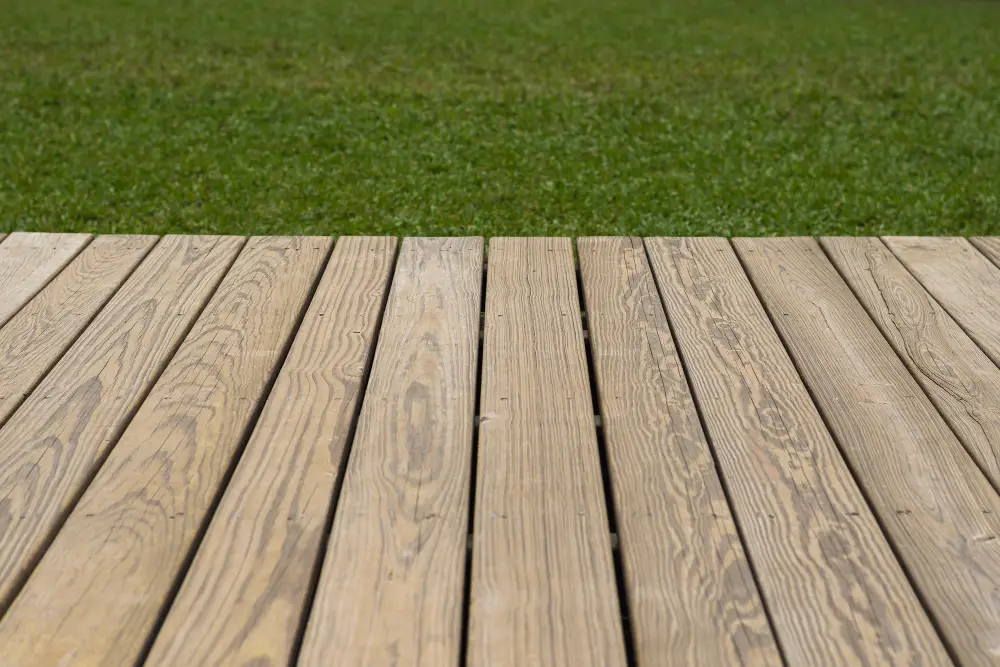
A weak or unstable deck can be dangerous and cause damage to your property. Therefore, it’s crucial to assess your existing deck structure and make any necessary repairs before proceeding with an outdoor kitchen installation.
To build a strong foundation for your outdoor kitchen on a deck, consider adding additional support posts or beams underneath the area where you plan to install appliances and cabinetry. You may also need to reinforce existing joists or add new ones if they are spaced too far apart.
It’s important not only that the foundation is sturdy but also level so that appliances sit evenly without wobbling. Use shims as needed under each leg of cabinets or grills until everything sits flush against one another.
Selecting Outdoor Kitchen Appliances
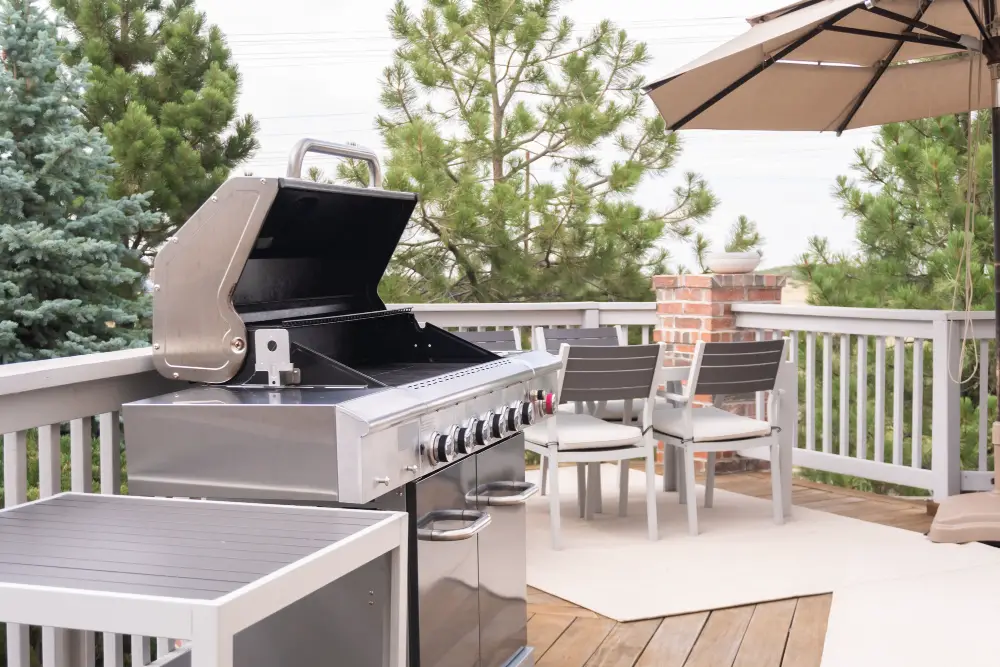
First and foremost, you want to choose appliances that can withstand the elements. Look for models that are specifically designed for outdoor use and made from durable materials such as stainless steel or weather-resistant polymers.
Next, think about what types of meals you’ll be preparing in your outdoor kitchen. If grilling is your main focus, invest in a high-quality grill with multiple burners and temperature controls.
You may also want to add a smoker or rotisserie attachment if those cooking methods appeal to you.
Other popular appliance options include refrigerators (either built-in or freestanding), ice makers, wine coolers, kegerators (for beer enthusiasts), pizza ovens, and even dishwashers.
Choosing Materials and Appliances
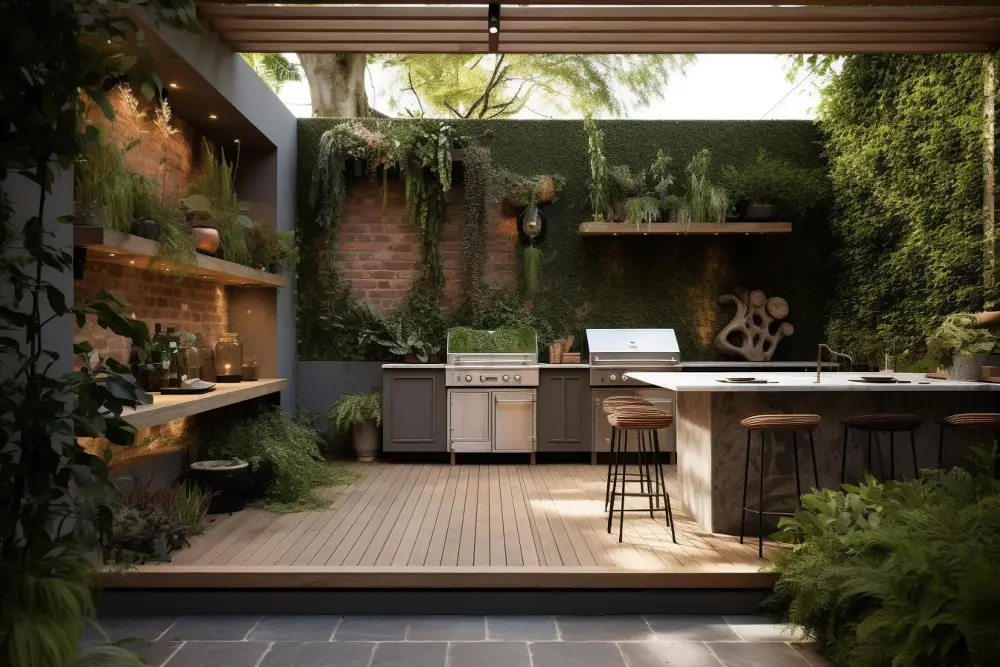
First, make sure that the materials you choose can withstand exposure to the elements. This means selecting weather-resistant options such as stainless steel or stone countertops and cabinets made from durable materials like teak or cedar.
In addition to durability, think about functionality when selecting appliances for your outdoor kitchen. You’ll want items that are specifically designed for outdoor use and can handle high temperatures without breaking down quickly.
Some popular appliance choices include built-in grills with multiple burners, side burners for cooking sauces or sides while grilling meat, refrigerators with ample storage space for food and drinks, sinks with running water (which will require plumbing), ice makers so guests always have cold beverages on hand during hot summer days.
Reliable Countertop Materials

You want to select a material that is durable, weather-resistant, and easy to maintain. Here are some reliable countertop materials you should consider:
1. Granite: This natural stone is one of the most popular choices for outdoor kitchens due to its durability and resistance against heat, scratches, stains, and UV rays.
2. Concrete: A concrete countertop offers versatility in design as well as strength against harsh weather conditions.
3. Stainless Steel: If you’re looking for an industrial-style kitchen with sleek lines that’s easy-to-clean then stainless steel may be perfect choice.
4.Tile Countertops : Tile countertops offer endless possibilities when it comes to color schemes & patterns while being resistant towards moisture damage.
5.Quartzite – Quartzite has become increasingly popular because of its beauty but also because it’s highly resistant towards heat & staining making this option ideal if you plan on doing lots of cooking outdoors!
Weatherproof Cabinet Options
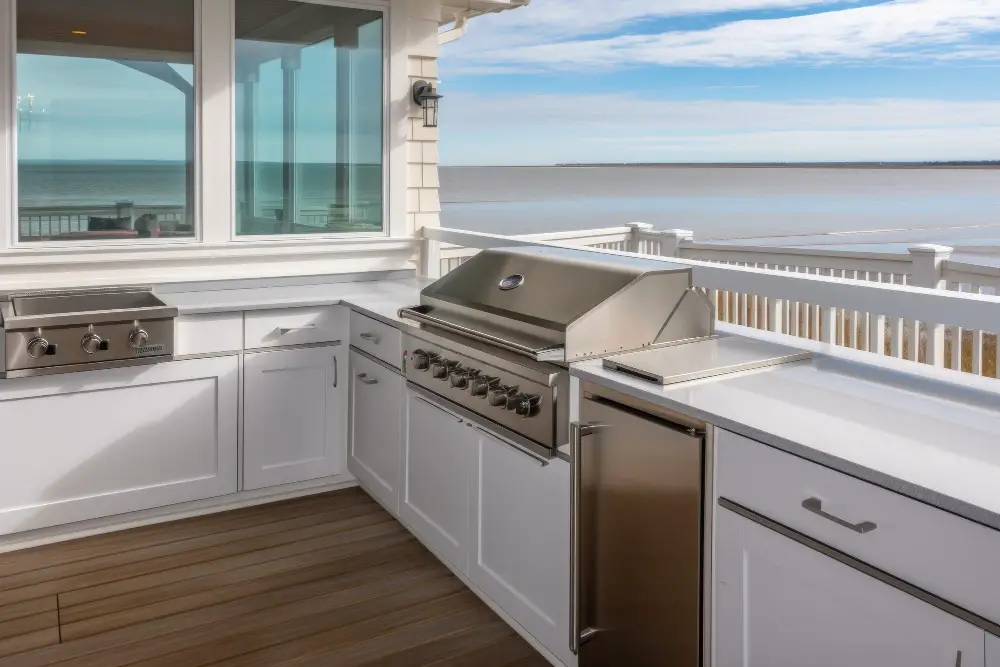
One of the most important components of your outdoor kitchen will be cabinets that can withstand harsh weather conditions. Weatherproof cabinet options are designed to resist moisture, heat, and cold temperatures while maintaining their appearance and functionality.
Stainless steel cabinets are a popular choice for outdoor kitchens because they’re durable and easy to clean. They also have a sleek modern look that complements any design style.
Another option is marine-grade polymer cabinetry which is resistant to fading, cracking or warping due to exposure from UV rays or saltwater.
Wooden cabinets may not be ideal for an outdoor kitchen as they tend not hold up well in extreme weather conditions unless treated with special coatings such as polyurethane varnish or paint specifically formulated for exterior use.
Create a Functional Layout
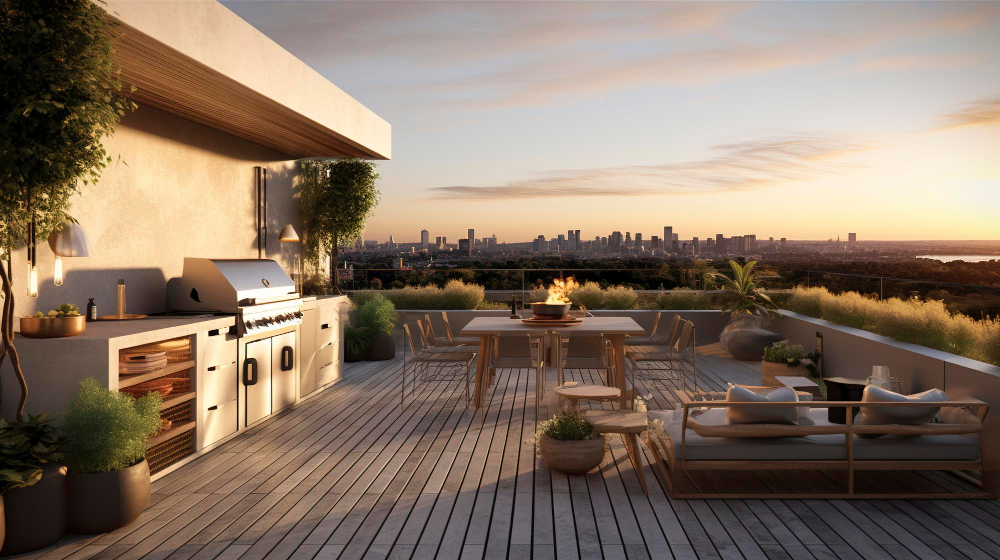
You want to make sure that the space is easy to navigate and that everything you need is within reach. Start by considering how you will use the space and what appliances are essential for your cooking needs.
One popular layout option is the “work triangle,” which involves placing your grill, sink, and refrigerator in a triangular formation for maximum efficiency. This allows you to move easily between each station while preparing food.
Another important factor in creating a functional outdoor kitchen layout is storage. Make sure there’s enough cabinet space for all of your cookware, utensils, and dishes so that they’re easily accessible when needed.
Consider adding seating areas around the perimeter of your outdoor kitchen so guests can relax while enjoying drinks or appetizers as you prepare dinner.
Wiring and Plumbing Considerations
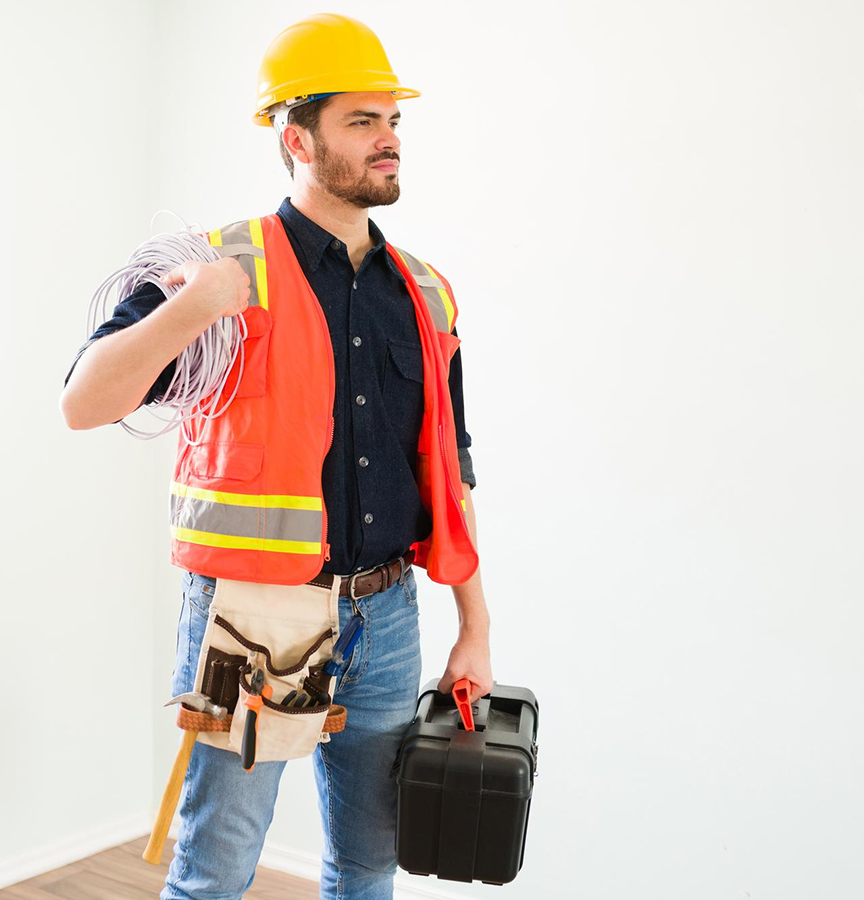
Depending on your design and appliance choices, you may need to install electrical outlets or gas lines for your grill or stove. It’s crucial to hire a licensed electrician and plumber who can ensure that all connections are safe, up-to-code, and properly installed.
For electrical wiring needs in your outdoor kitchen area, make sure that all wires are rated for exterior use with GFCI (ground fault circuit interrupter) protection. This will protect against any potential shock hazards caused by moisture exposure.
Plumbing considerations include installing water supply lines for sinks or refrigerators with ice makers. You’ll also need proper drainage systems in place so that wastewater doesn’t accumulate under the deck surface.
It’s important to plan out these details before starting construction so that you can avoid costly mistakes down the road.
Lighting Solutions for Outdoor Kitchens

When planning your lighting solutions for your deck-based outdoor kitchen, consider the following factors:
1. Task Lighting: This type of lighting illuminates specific areas where you’ll be cooking or preparing food, such as countertops and grills.
2. Ambient Lighting: This type of lighting creates a warm and inviting atmosphere in your outdoor space by providing general illumination throughout the area.
3. Accent Lighting: Use accent lights to highlight architectural features or decorative elements in your backyard that add visual interest to your overall design.
4. Energy Efficiency: Consider using LED bulbs for energy-efficient options that last longer than traditional incandescent bulbs while consuming less power.
5. Weather Resistance: Ensure all light fixtures are rated for exterior use with weather-resistant materials designed to withstand harsh environmental conditions like rain, wind, snowfall etc., so they can last long without getting damaged easily.
Ventilation and Smoke Management
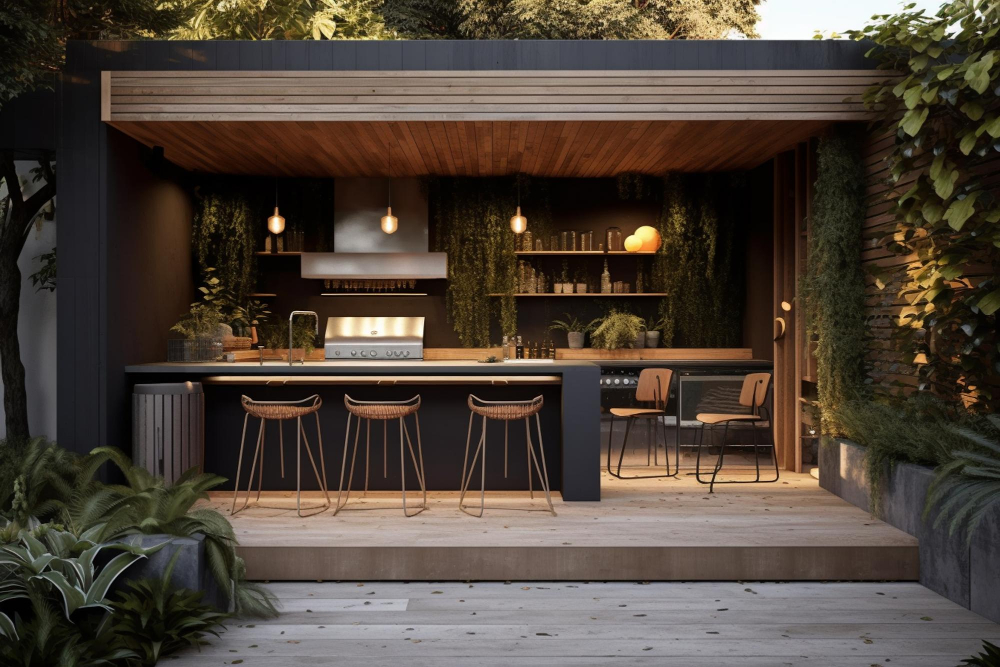
Without proper ventilation, smoke can accumulate in your outdoor living space, causing discomfort for you and your guests. It’s essential to have a good airflow system that will allow the smoke to escape while keeping fresh air circulating.
There are several ways you can achieve proper ventilation in your outdoor kitchen. One option is installing an overhead vent hood above the cooking area that will draw out any excess heat or fumes from grilling or cooking appliances.
Another solution is incorporating natural elements such as open windows or skylights into your design plan.
It’s also crucial to ensure that there are no flammable materials near the grill area, including curtains, furniture cushions, or decorative items like dried flowers or leaves.
Building Permits and Regulations
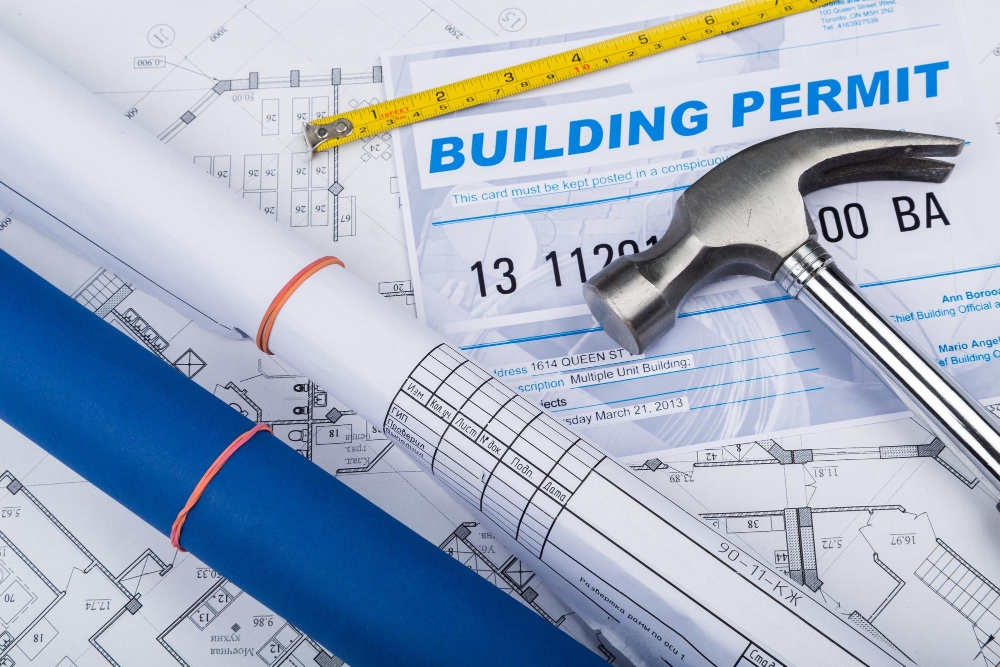
Building codes vary from state to state, so make sure you’re familiar with the rules in your area before starting any construction work.
In most cases, adding an outdoor kitchen on a deck will require obtaining a permit from the city or county government. The permit process typically involves submitting detailed plans of your project and paying fees for review and approval.
Some areas have specific regulations regarding outdoor kitchens’ size, location relative to property lines or structures like fences or sheds. Some cities may also require inspections during different stages of construction.
Failing to obtain proper permits can result in fines or even having to remove all work done at great expense if found non-compliant by inspectors later down the line. So be sure that everything is up-to-code before beginning any significant renovations!
Safety Precautions for Outdoor Kitchens
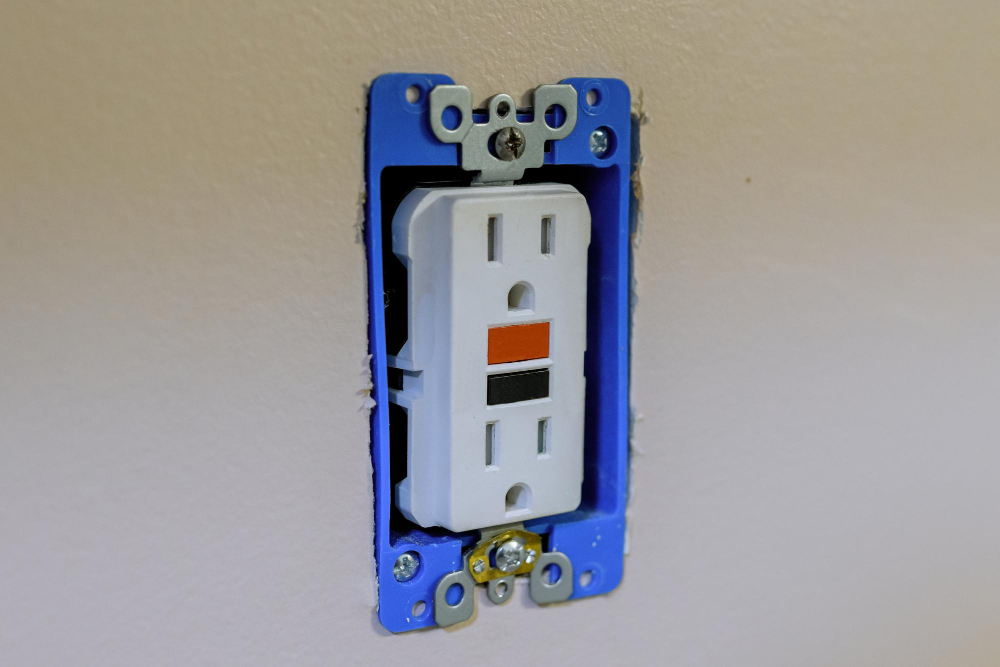
You’ll be dealing with gas lines, electrical wiring, and hot surfaces that can pose serious risks if not handled properly. Here are some essential safety precautions to keep in mind:
1. Install GFCI outlets: Ground Fault Circuit Interrupter (GFCI) outlets are designed to protect against electric shock by shutting off the power when there’s a ground fault.
2. Use weather-resistant materials: Make sure all appliances and fixtures used in your outdoor kitchen are rated for outdoor use and can withstand exposure to rain, wind, sun or snow.
3. Keep flammable items away from heat sources: Store propane tanks at least 10 feet away from any heat source or open flame.
4. Proper ventilation is key: Ensure proper ventilation of smoke produced by grills so it doesn’t accumulate under the roof of your deck or near combustible materials like wood railings.
5. Fire extinguisher within reach – Always have a fire extinguisher nearby just in case something goes wrong while cooking outdoors.
Shelter and Windbreak Solutions
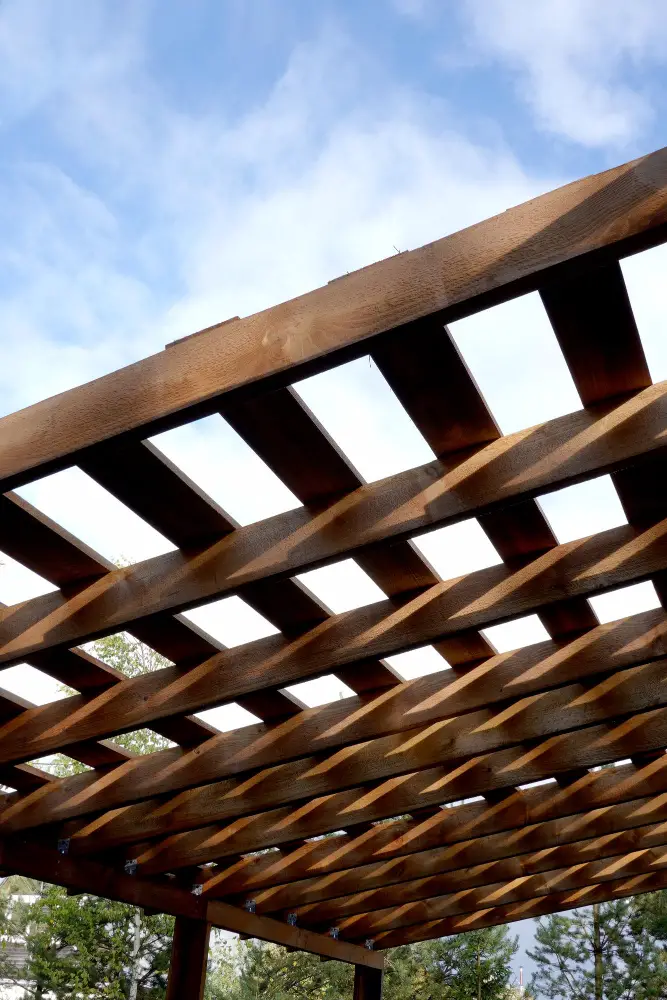
Wind and rain can quickly ruin any outdoor gathering, so you’ll want to make sure that your space is protected from the elements. One solution is to install a shelter or windbreak around your outdoor kitchen.
A pergola or canopy can provide shade and protection from light rain while still allowing for fresh air circulation. If you’re looking for more substantial coverage, consider installing a roof over your entire deck area.
Another option is to add walls or screens around the perimeter of your deck. This will not only protect against wind but also create privacy for intimate gatherings with friends and family.
Whatever solution you choose, be sure that it complements the design of both your home and outdoor kitchen while providing adequate protection from harsh weather conditions.
Budgeting and Cost Estimations
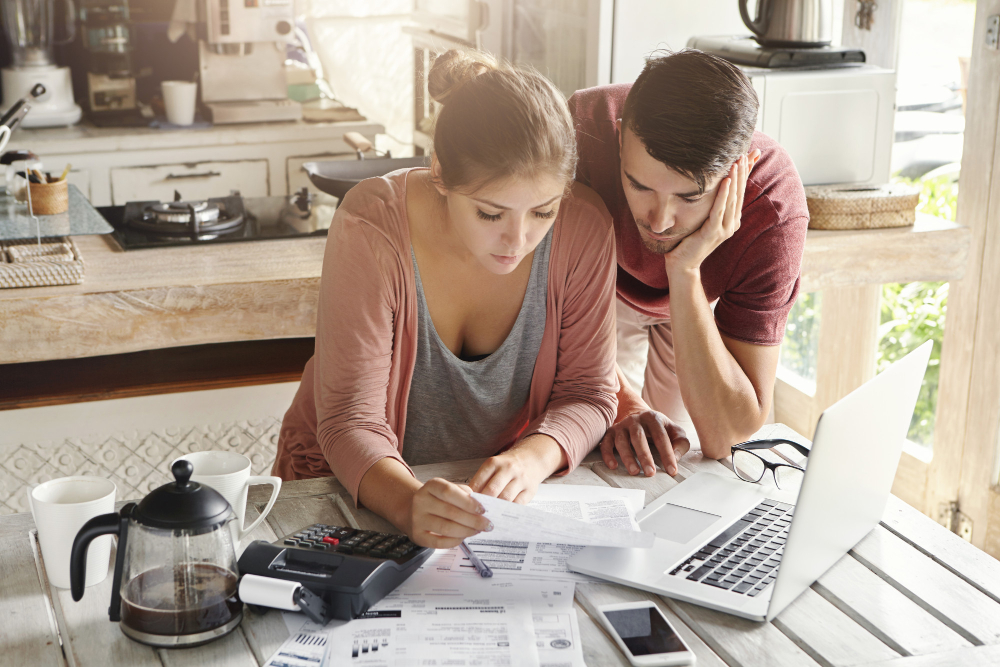
The total cost of your project will depend on several variables such as the size of your deck, the materials you choose for construction, and the appliances you want to install in your outdoor kitchen.
To get started with budgeting, make a list of all necessary items required for building an outdoor kitchen. This includes appliances like grills or refrigerators, countertops made from granite or concrete that can withstand harsh weather conditions outdoors; cabinets built from durable materials like stainless steel or teak wood; lighting fixtures designed specifically for use outside.
Once you have created this list and determined what is essential versus optional features based on personal preferences (such as adding extra storage space), research prices online at home improvement stores before making any purchases so that there are no surprises when it comes time to pay up front costs associated with installation fees if hiring professionals instead DIY-ing everything yourself.
DIY Versus Professional Installation
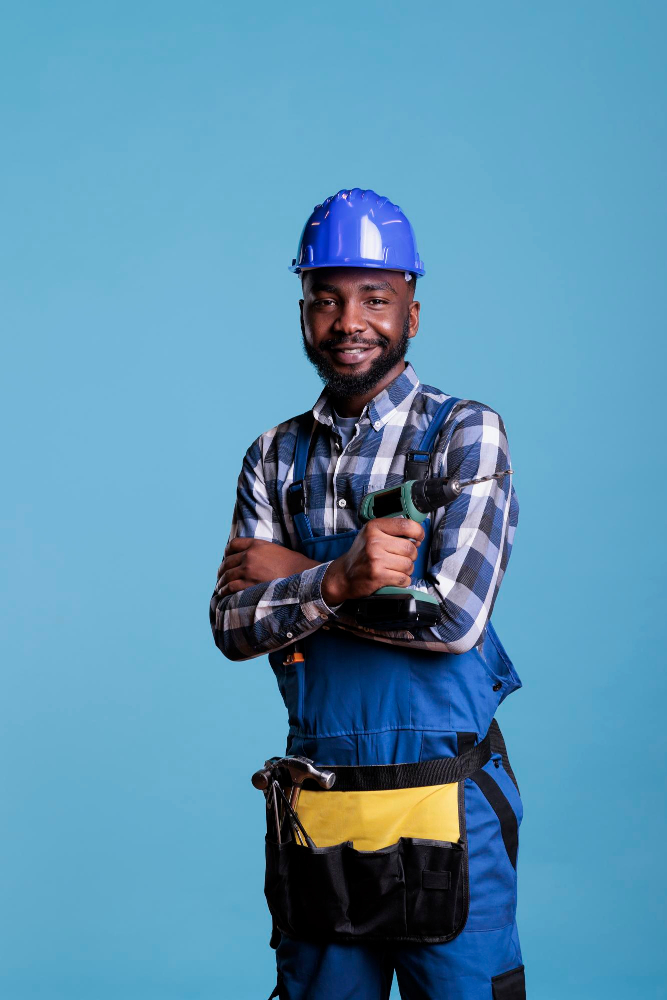
While the DIY approach may seem like a cost-effective solution, it’s important to consider your skill level and experience before taking on such a project. Building an outdoor kitchen requires knowledge of plumbing, electrical wiring, and construction techniques that may be beyond the scope of some homeowners.
Professional installation offers several advantages over the DIY approach. First and foremost is expertise – professionals have years of experience in designing and installing outdoor kitchens that are both functional and aesthetically pleasing.
They also have access to specialized tools and equipment needed for complex installations.
Another advantage is time-saving – while building an outdoor kitchen yourself can take weeks or even months depending on your schedule; professionals can complete most projects within days or weeks at most.
Hiring professionals ensures compliance with local regulations regarding permits for gas lines/electrical work etc., which could save you from costly fines down the line if something goes wrong during inspection!
Outdoor Kitchen Maintenance Tips

Here are some essential maintenance tips for your outdoor kitchen:
1. Clean regularly: Regular cleaning is crucial for maintaining the appearance and hygiene of your outdoor kitchen.
Use warm soapy water or specialized cleaners to clean countertops, cabinets, appliances, and grills.
2. Cover up: Invest in high-quality covers for all of your appliances when they’re not in use to protect them from weather damage.
3. Check gas lines: If you have a gas-powered grill or stove in your outdoor kitchen, make sure that the gas lines are checked annually by a professional technician.
4. Inspect electrical wiring: Ensure that all electrical wiring is properly installed and maintained according to local codes by an electrician.
5. Store utensils indoors: Keep cooking utensils inside when not using them as leaving them outside can cause rusting over time due to exposure from moisture.
By following these simple maintenance tips regularly will help keep everything running smoothly with minimal issues while extending the life of each appliance within the space!
FAQ
Can I build an outdoor kitchen on a wood deck?
Yes, you can build an outdoor kitchen on a wood deck, but it requires proper planning, considering the deck’s material and load-bearing capacity.
Can a deck support an outdoor kitchen?
Yes, a deck can support an outdoor kitchen, especially when built from a composite material due to its higher combustibility rating compared to wood.
What is the cheapest way to build an outdoor kitchen?
The cheapest way to build an outdoor kitchen is by utilizing salvaged materials such as reclaimed wood or recycled stone and brick, which are cost-effective and eco-friendly.
Can you build an outdoor kitchen on a Trex deck?
Yes, you can build an outdoor kitchen on a Trex deck, as Trex offers cabinets suitable for outdoor kitchens of various sizes.
What are the essential components for a functional outdoor kitchen on a deck?
Essential components for a functional outdoor kitchen on a deck include a grill, counter space, storage, sink, and some type of covering or shade.
How can I weatherproof my outdoor kitchen on a deck to ensure longevity?
To weatherproof your outdoor kitchen on a deck and ensure longevity, consider using materials like stainless steel, install a durable roof or canopy, and use sealants for joints and surfaces.
What types of materials are best suited for constructing an outdoor kitchen on a deck?
The best suited materials for constructing an outdoor kitchen on a deck include weather-resistant and durable options such as stainless steel, stone, and concrete.

